NVIDIA Quadro RTX 5000 Compute Related Benchmarks
We are going to compare the NVIDIA Quadro RTX 5000 to our growing data set.
Geekbench 4
Geekbench 4 measures the compute performance of your GPU using image processing to computer vision to number crunching.
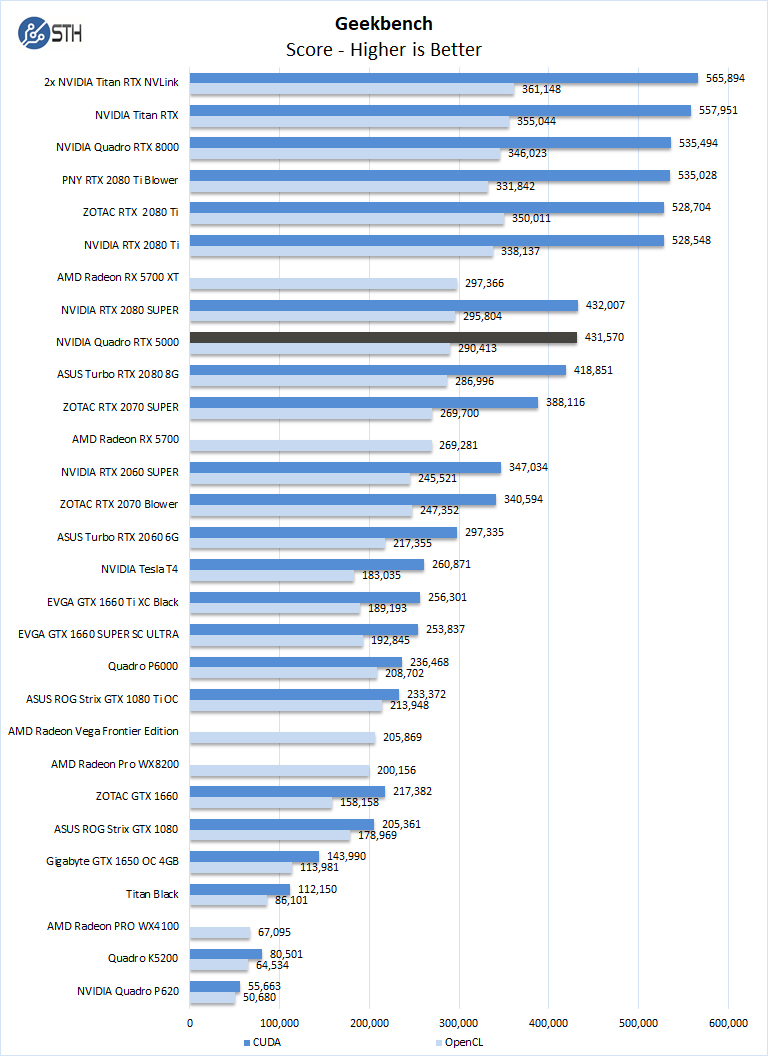
Our first compute benchmark, we see the NVIDIA Quadro RTX 5000, achieve results close to RTX 2080 Super. There is a slight difference in numbers that we attest to cooling differences. We will see this difference in other benchmarks also.
LuxMark
LuxMark is an OpenCL benchmark tool based on LuxRender.
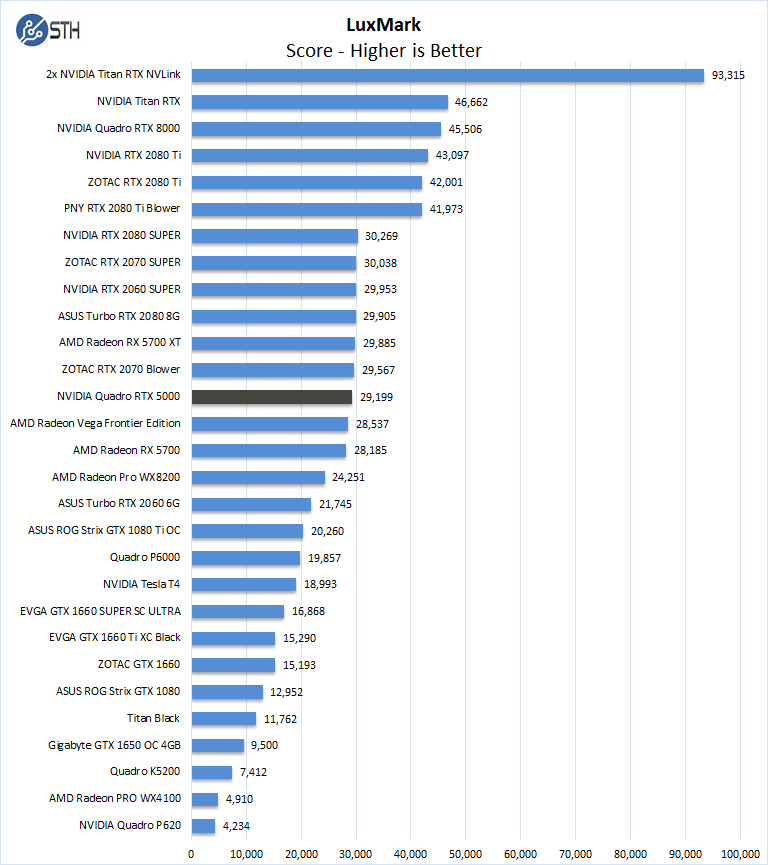
With LuxMark, we generally find the dual-fan cooler GPU’s have a performance edge, which we see with the NVIDIA Quadro RTX 5000 dropping down to RTX 2070 performance levels. This is a tight grouping from the Quadro RTX 5000 to the GeForce RTX 2080 Super that is well under a 5% delta.
AIDA64 GPGPU
These benchmarks are designed to measure GPGPU computing performance via different OpenCL workloads.
- Single-Precision FLOPS: Measures the classic MAD (Multiply-Addition) performance of the GPU, otherwise known as FLOPS (Floating-Point Operations Per Second), with single-precision (32-bit, “float”) floating-point data.
- Double-Precision FLOPS: Measures the classic MAD (Multiply-Addition) performance of the GPU, otherwise known as FLOPS (Floating-Point Operations Per Second), with double-precision (64-bit, “double”) floating-point data.
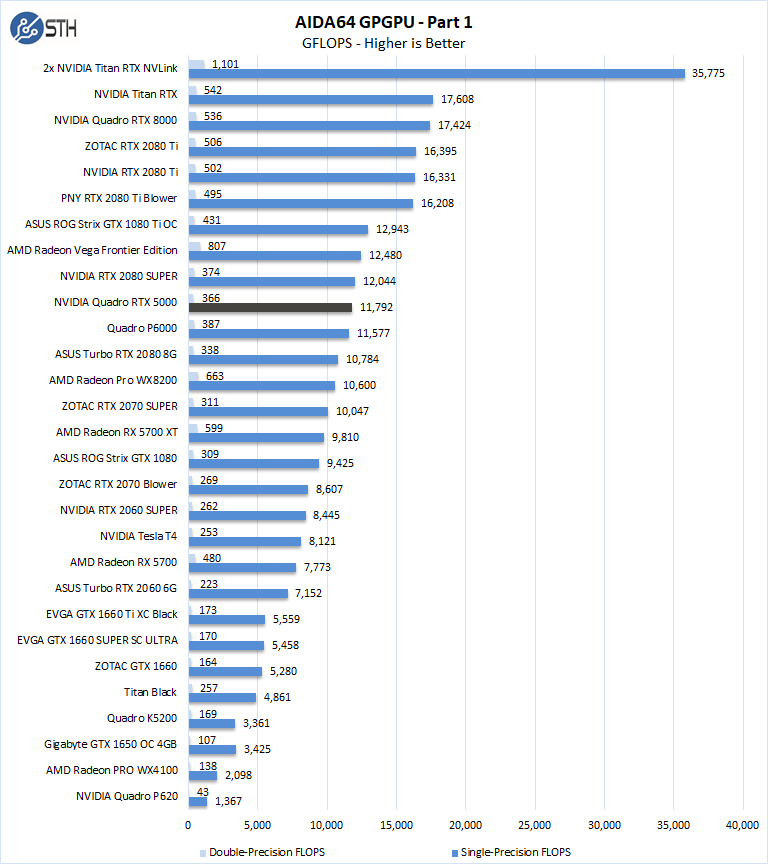
The next set of benchmarks from AIDA64 are:
- 24-bit Integer IOPS: Measures the classic MAD (Multiply-Addition) performance of the GPU, otherwise known as IOPS (Integer Operations Per Second), with 24-bit integer (“int24”) data. This particular data type defined in OpenCL on the basis that many GPUs are capable of executing int24 operations via their floating-point units.
- 32-bit Integer IOPS: Measures the classic MAD (Multiply-Addition) performance of the GPU, otherwise known as IOPS (Integer Operations Per Second), with 32-bit integer (“int”) data.
- 64-bit Integer IOPS: Measures the classic MAD (Multiply-Addition) performance of the GPU, otherwise known as IOPS (Integer Operations Per Second), with 64-bit integer (“long”) data. Most GPUs do not have dedicated execution resources for 64-bit integer operations, so instead, they emulate the 64-bit integer operations via existing 32-bit integer execution units.
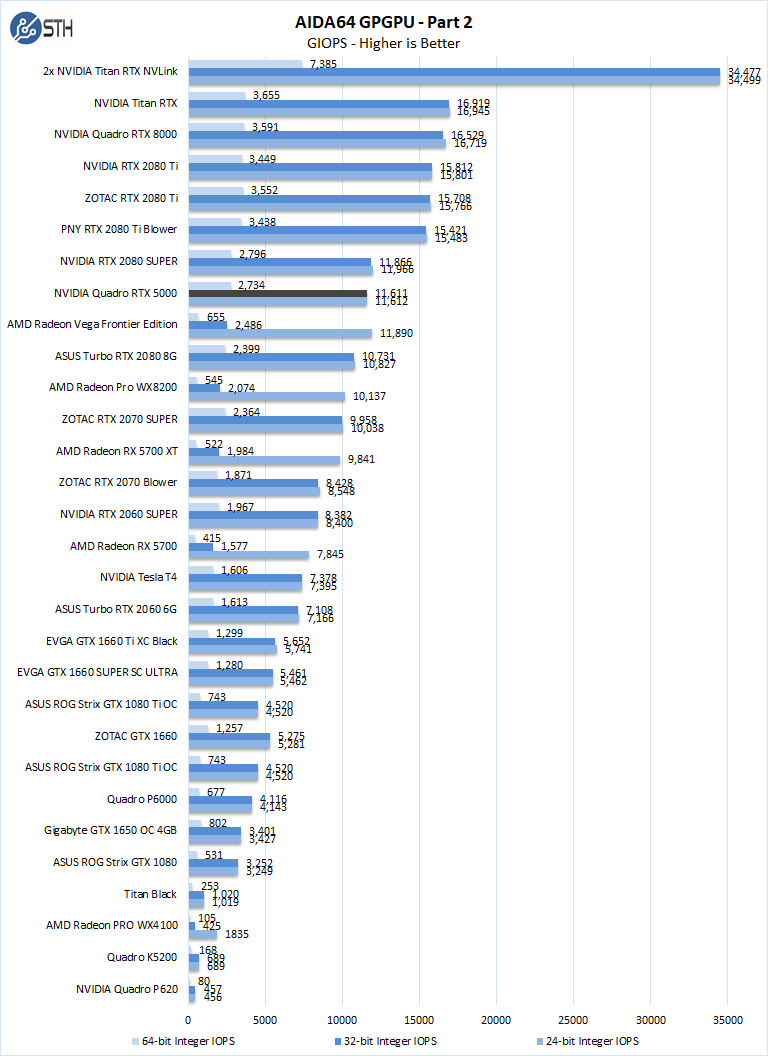
The take away here is the NVIDIA Quadro RTX 5000 keeps up with the RTX 2080 series falling somewhere between the GeForce RTX 2080 and RTX 2080 Super.
hashcat64
hashcat64 is a password cracking benchmarks that can run an impressive number of different algorithms. We used the windows version and a simple command of hashcat64 -b. Out of these results, we used five results to the graph in our charts. Users who are interested in hashcat can find the download here.
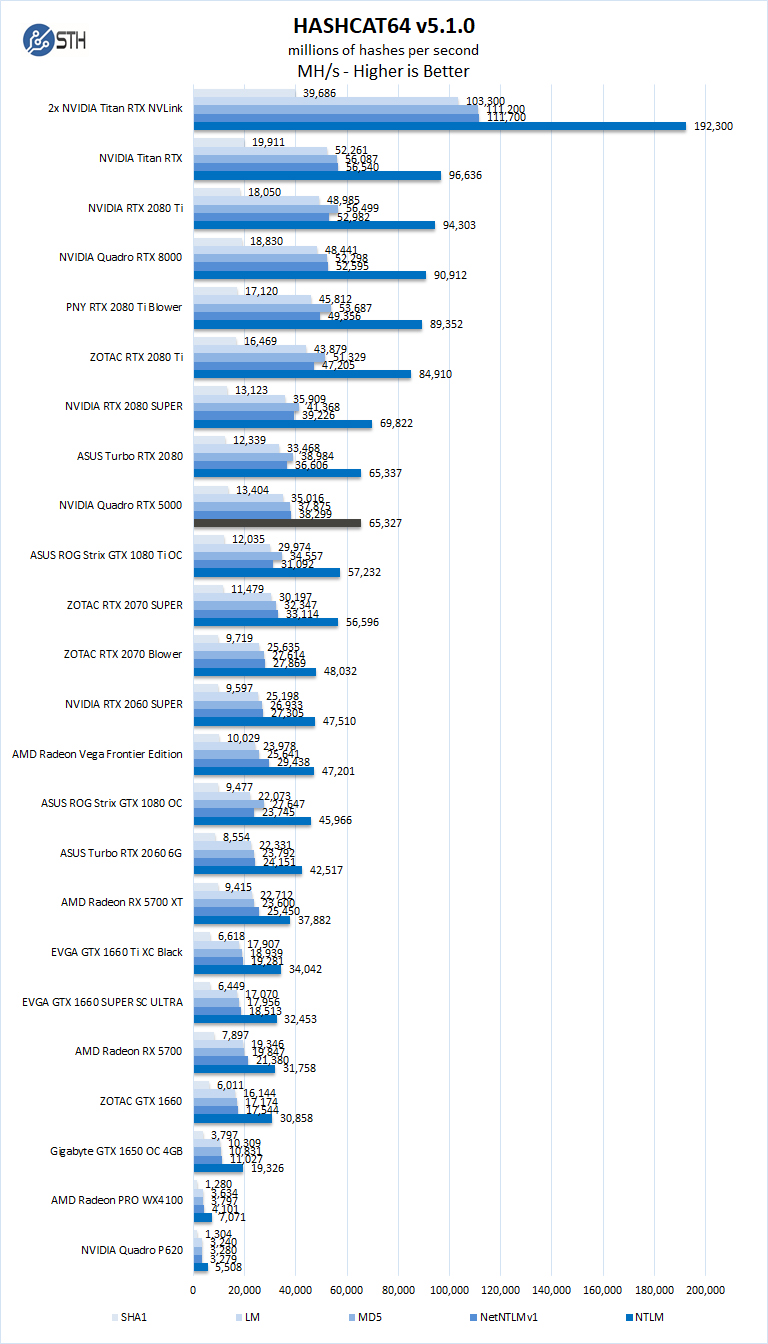
Hashcat can out a heavy load on GPU’s, and here we see the dual-fan graphics cards have the edge in our results.
SPECviewperf 13
SPECviewperf 13 measures the 3D graphics performance of systems running under the OpenGL and Direct X application programming interfaces.
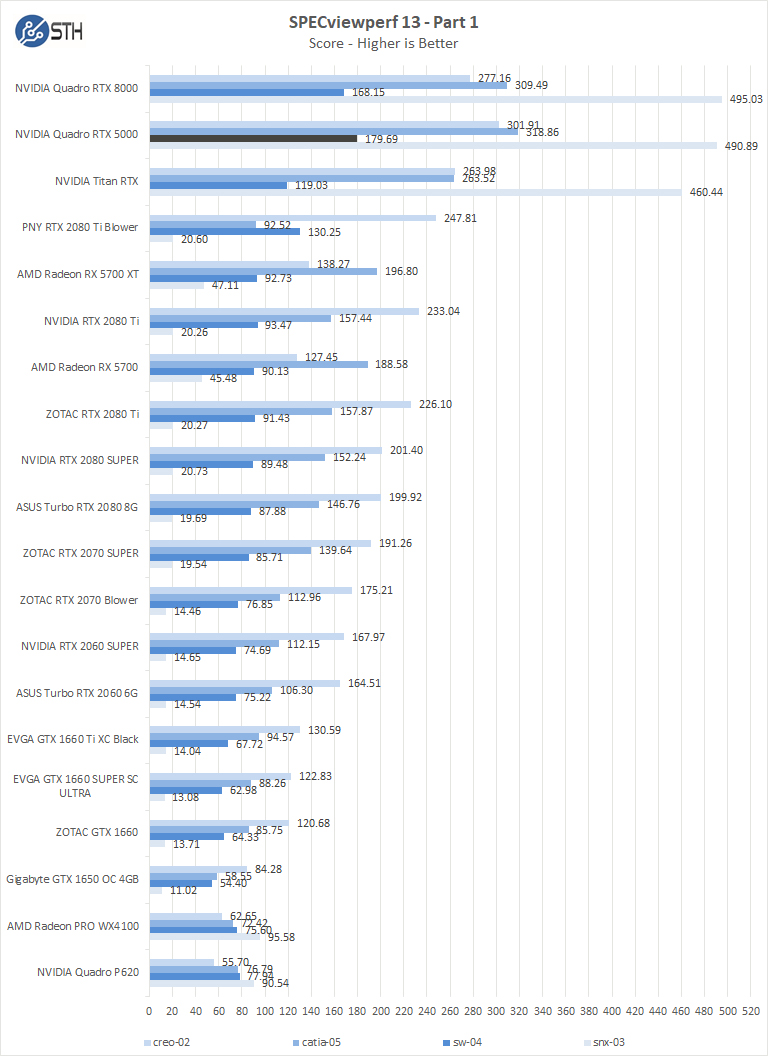
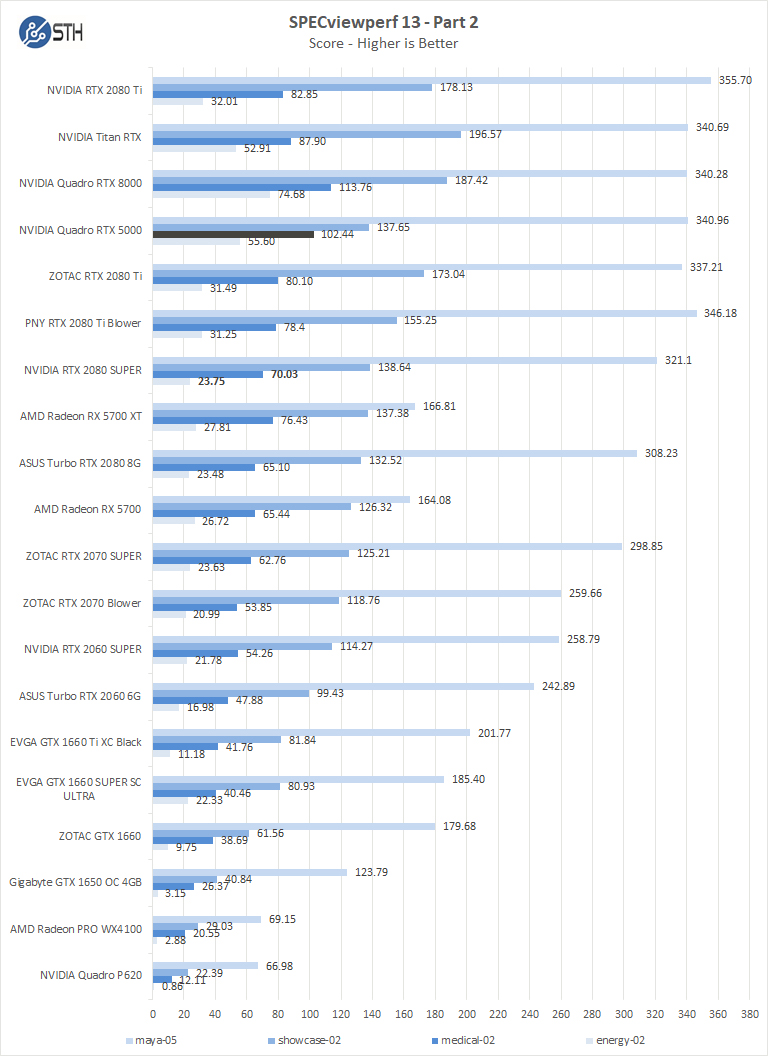
In SPECviewperf, the Quadro RTX 5000 falls into RTX 2080 Ti pack and, in some cases, surpasses the Titan RTX. This is a great result here easily distancing itself from the GeForce series.
Let us move on and start our new tests with rendering-related benchmarks.

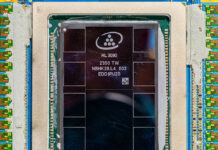


“Certified” most of the times means more expensive for a cheaper alternative. It’s the same chip as used in the Geforce cards and artificial bottlenecked when possible.
The AIDA64 results for double precision seem to indicate like many other cards outside of the V100 price segment that this is an AI and graphics card that is not good for HPC. It would be nice to include the Titan-V in the AIDA64 table to see 64-bit float difference.
Another interesting card, for developers and scientists who don’t have a US$ 13000 budget for a V100 are the Radeon VII cards from AMD which can run CUDA (mostly) with the HIP compiler.
Does AMD still make GPU’s?
They seem to lead the temperature chart here but not much else.
Missed a bit on page 2, should probably say Geforce RTX 2080 Super rather than Geforce RTX Super
@Jim:
Well yes, but not for dinky toys at the moment, they make them for supercomputers like the HPE-Cray/AMD with the El Capitan 2 Exaflop Supercomputer.
Hi William, you still haven’t got your hands on an mi50 or Radeon VII cards yet?